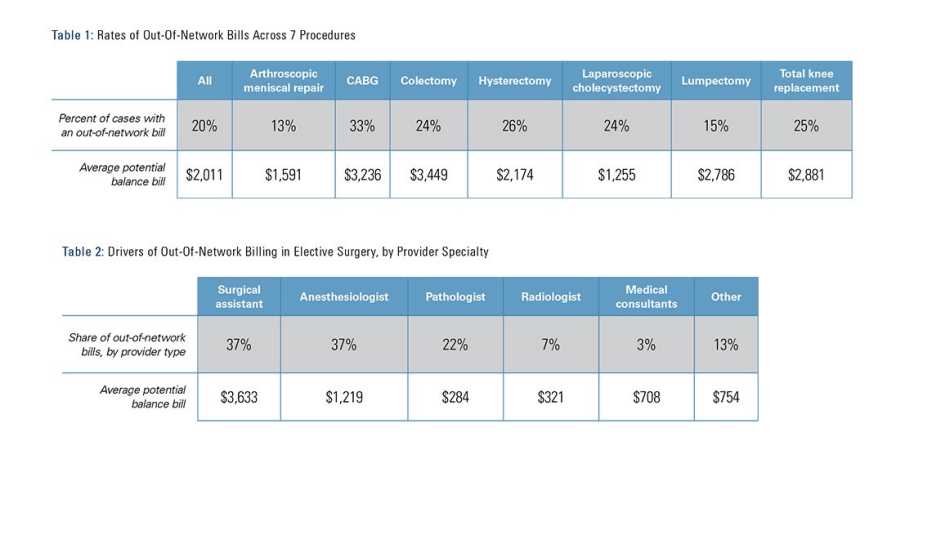Staying Fit


What hurts worse than surgery? How about an unexpected bill for thousands of dollars? That's what one in five insured patients see after undergoing popular nonemergency operations at in-network hospitals or outpatient centers with surgeons who accept their insurance.
The average surprise bill insured patients receive after surgery is $2,011 — and that's on top of any out-of-pocket balance a patient owes (usually around $1,800) to meet insurance co-pays and deductibles, according to a report published in the Journal of the American Medical Association.


AARP Membership— $12 for your first year when you sign up for Automatic Renewal
Get instant access to members-only products and hundreds of discounts, a free second membership, and a subscription to AARP the Magazine.
The source of the surprise bills stems from health care workers involved in the surgery or in follow-up care who are out of the patient's insurance network, such as imaging specialists, anesthesiologists and surgical assistants.
"Patients need to be aware this is happening — that you could go to a doctor in a hospital who is covered by your insurance and still get charges from somebody who's not covered by insurance,” says Karan Chhabra, M.D., first author of the report, a surgical resident at Brigham and Women's Hospital in Boston and national clinician scholar at the University of Michigan Institute for Healthcare Policy & Innovation.
"Some other data have shown that one in three patients with health insurance still can't afford an unexpected $1,000 medical bill,” he adds. “So these are real people that are getting into trouble.”
Out-of-network charges were significantly more common among patients who had complications after surgery and for those covered by health insurance exchange plans, compared to employer-based plans.


Protect yourself from unexpected medical bills
In the absence of a national policy to protect patients from surprise bills, Chhabra encourages patients to talk to their doctor, insurance company and hospital or surgery center ahead of time about what and who are covered by their plan.
Even then, doing your homework won't guarantee an experience free from surprise bills for elective procedures. Surgical care can be especially complicated because a “patient is touched by so many members of an interdisciplinary team,” Chhabra says. But asking the hospital which doctors they tend to contract with for anesthesia, radiology and pathology services is a good place to start.
Chhabra also recommends patients find out whether their doctor uses in-network or out-of-network labs or imaging centers to avoid unexpected costs. And if you receive a surprise bill, don't “shy away” from asking your insurance company to cover all or some of the costs, asking for discounts or write-offs for their share of the bill, or filing a complaint with state insurance regulators, the study's authors say.
Surgeons can also play a role in limiting surprise bills by selecting, when possible, who is on their surgical team, paying close attention to the types of insurance everyone accepts, Chhabra says.
"Given that [surgical assistants] are the single largest source of our bills, I really hope that our community in surgery starts paying more attention to who we are working with in the operating room and outside the operating room,” he adds.

































































More on health
A Survival Guide to Surprise Medical Bills
How to spot errors, fight out-of-network charges and lessen the stress of health care debtBalance Bills and Other Surprise Medical Costs
'Balance billing' by out-of-network doctors and undetected errors on complex bills can drive up your health care costsHow to Negotiate a Surprise Medical Bill
Don't be afraid to ask your doctor or hospital about taking less money or giving you more time to pay